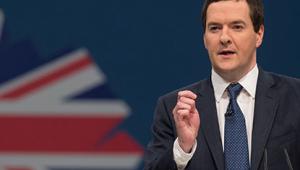
Philip Hammond set out three new fiscal rules in the House of Commons today Photo: PA
In his Autumn Statement to MPs, Hammond said that the UK’s vote to leave the European Union and other economic uncertainties meant government would no longer seek to deliver a surplus in 2019-20.
Instead, Hammond announced that he would adopt three new fiscal rules in a new Charter for Budget Responsibility.
This will pledge that the public finances should be returned to balance as early as possible in the next Parliament, and that borrowing (adjusted to reflect the economic cycle) should be below 2% by the end of this Parliament.
A second rule commits Hammond to have public sector net debt as a share of economy must be falling by the end of this Parliament, and a third to maintaining welfare spending in a cap set by the government.
These last two rules are similar to strictures announced by Osborne when he was chancellor – but subsequently broken – that debt should fall year on year and that welfare spending be kept within a cash cap.
Osborne also committed to reaching a surplus in 2019-20, and in subsequent years, as his central fiscal mandate, although swiftly ditched this following the 23 June Brexit vote.
Five months on, Hammond said times had changed and the Treasury’s key task was now make the economy resilient ahead of the UK’s exit from the European Union. This will require “fiscal headroom”, he told MPs.
“But the prime minister and I remain firmly committed to seeing the public finances return to balance as soon as practicable while leaving enough flexibility to support the economy in the near-term,” he told MPs.
A cap on welfare will not now take effect until 2021-22, when it will be set a £126bn. The Autumn Statement documents today set out a “pathway” to reaching this, based on spending limits of £119.8bn in 2016-17, £119.6bn in 2017-18, £120.1bn in 2018-19, £120.5bn in 2019-20 and £123.2bn in 2020-21. This realistic baseline reflected all announced welfare policies, he said, including today’s announced reduction in the Universal Credit taper rate for additional earnings from 65% to 63% from April 2017.
Hammond also confirmed that departmental spending plans announced in last year’s Spending Review would remain in place, and efficiency savings worth £3.5bn would be found by 2019-20,
However, as part of an effort to create a new relationship between spending departments and the Treasury, he would allow £1bn to be reinvested in priority areas.
“Having run two large spending departments [transport and defence] in previous roles, I came to this job with some very clear views about the relationship between the Treasury and spending departments,” he told MPs.
“I want departments to be incentivised to drive efficiencies. And I want the Treasury to be an enabler for good, effective spending across government. To kickstart this new approach, I will allow up to £1bn of the savings found by the efficiency review in 19/20 to be reinvested in priority areas and I have budgeted today accordingly.”
Responding to the statement, CIPFA chief executive Rob Whiteman said this was always going to be an Autumn Statement that left the chancellor with little wriggle room.0
“As a result it is no surprise that current departmental spending reductions remain in place,” he stated. “The fact that the UK’s productivity lags so worryingly far behind other G8 economies was the understandable driver behind much of what followed.




















